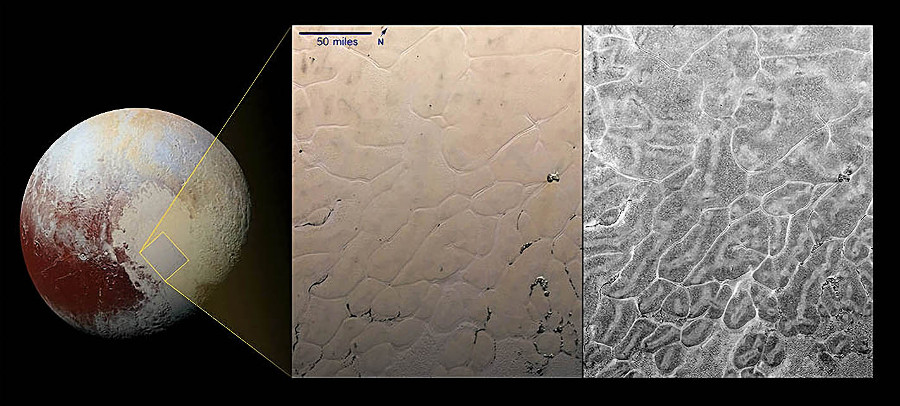Heavy hearted

It's no coincidence that Sputnik Planitia has a special place in the heart-shaped surface feature on Pluto. The big basin, flooded with nitrogen ice, lies almost exactly underneath and opposite Pluto's largest moon. Holding that nearly-equatorial spot requires a lot of extra weight, noted Francis Nimmo, professor of Earth and planetary sciences at UC Santa Cruz. The question was, in a 1,000 kilometer-wide hole, where was that heft hiding?
"A subsurface ocean is the easiest way of getting extra density, since water is denser than ice," said Nimmo, making that case in a paper published in Nature. Returning with images of fractured surfaces all over Pluto, NASA's New Horizons mission helped resolve the hidden ocean question, a possibility Nimmo previously described in a 2011 paper. If a big impact dug out the basin, the ice removed would be replaced with denser water from an ocean below. The slow expansion of the freezing water closer to the surface would crackle the sphere's crust.
"We're finding more oceans in the outer solar system," said Nimmo. While they could indicate habitability, he's more intrigued by the fundamental science: "With the information we have, what can we learn about these icy bodies?"

